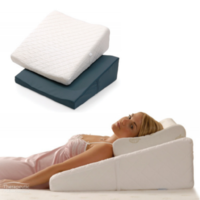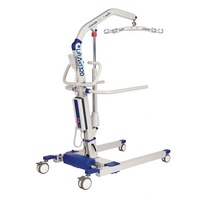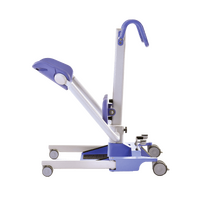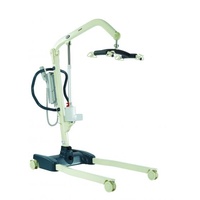Standing Hoist - ISA XPlus
Compact without Compromising on Comfort We leave the lifting to the lifter. The Invacare Roze Standup Lifter is compact and maneuverable and provides an easy, safe and comfortable assisted transfer for patients in care or those with rehabilitation needs.
Description
Standing hoists, also known as stand-up lifts or stand aids, offer several benefits for both patients and caregivers in various care environments.
Its design allows patients to be transferred or assisted from either a bed or a chair.
Whether in the home, aged care facility, or hospital, the stand-up lifter is ideal for the daily transfer of patients. Comfortable and Secure Knowing the patient is comfortable creates confidence in the carer to use the Lifter, and therefore reduces manual handling injuries.
The Standing Hoist can be used for two types of transfers; standing assistance or seating assistance.
Features
- An ergonomic lift angle designed to minimize shear when lifting a patient.
- Handles on the lifting boom enable the user to adjust their hand position, making them feel comfortable and secure during raising and lowering.
- Large height-adjustable knee pad caters to a range of different patient heights.
- The Standing hoist is constructed of a combination of aluminum and steel and has smooth-rolling castors, so a carer can push the lifter smoothly and with reduced force.
Safe and Reliable
- With a large push handle, the carer is able to position their hands for comfort and ease of maneuvering the lifter.
- The single-position hook makes for a simple and easy sling attachment plus a safety clip prevents the sling from disengaging.
- Added safety features include an emergency stop button, an emergency mechanical descent system and an anti-entrapment device, (which stops the boom lowering if it meets resistance).
- Tested to AS10535.2002 (the Australian standard for hoists) and to ISO10535.2006.
Here are some key Benefits:
Enhanced Safety:
Standing hoists reduce the risk of injury to both patients and caregivers by providing stable and secure support during transfers. This is particularly beneficial when transferring a patient who has limited mobility or balance.
Improved Mobility:
They encourage and support patients into a standing position, which can aid in the maintenance and improvement of muscle tone and joint flexibility. This is crucial for patients undergoing rehabilitation or those with degenerative conditions.
Promotes Independence:
For patients who can partially support their weight, standing hoists can promote a sense of independence and self-esteem by allowing them to participate actively in the transfer process.
Ease of Use:
Many standing hoists are designed with simplicity in mind, making them easy for caregivers to operate. They often come with features like adjustable lifting straps and ergonomic handles.
Space Efficiency:
Compared to full-body hoists, standing hoists typically have a smaller footprint, making them easier to maneuver in tight spaces.
Comfort and Dignity:
They allow for a more dignified transfer process, as patients can remain in a semi-upright position, maintaining eye contact and engagement with caregivers.
Versatility:
Standing hoists can be used for various tasks beyond transfers, such as aiding in dressing, toileting, and even standing exercises for rehabilitation purposes.
Reduced Caregiver Strain:
By mechanically assisting with lifts and transfers, these hoists minimize the physical strain on caregivers, reducing the risk of back injuries and other musculoskeletal disorders.
Specifications
- Safe Working Load: 200kg
- Length of Base: 112cm
- Base width operation: 66cm
- Height of Base: 12cm
- Min height of central suspension point: 94cm
- Max height of central suspension point: 161cm
- Machine weight: 53kg
| SKU | 21-0201B |



 Hire Mobility Equipment
Hire Mobility Equipment














